Tomorrow marks the 10th anniversary of Hurricane Katrina, and the remembrance is bittersweet. New Orleans has come together, and come a long way, since the catastrophic disaster -- but scars from the storm are nonetheless painfully present. In honor of the city's progress, and in memory of those who suffered, here are 10 (mostly hopeful) facts about where New Orleans is today, 10 years after the hurricane.
1. Tourism has rebounded.

New Orleans tourism has rebounded. While Allen Alongi, sales coordinator at The Old No. 77 Hotel & Chandlery, cautions “We are growing but [we] won’t plateau soon,” he nonetheless positively adds, “The numbers speak for themselves; tourism has definitely been better than ever in 2015 since the storm.”
Last year the city welcomed 9.5 million visitors, compared to 3.7 million in 2006, the first full year after the storm. And some statistics even show gains when compared to the years before Hurricane Katrina. In 2004 (Katrina hit in August 2005), hotel revenue clocked in at about one billion; last year, it was nearly $1.37 billion. Hotel rooms have also increased by several hundred since before the storm, and more than 10,000 since right after the storm. After closing due to Katrina-inflicted damages, the Hyatt Regency (pictured) received a $275 million makeover and reopened in October 2011 with an additional 1,200 rooms.
2. Population numbers are still down.
The city suffered a mass exodus not only of businesses, but also of residents, post-Katrina. Although many of both have returned, the city’s population is down 18 percent compared to 2004 statistics.
3. The city is all about southern hospitality.
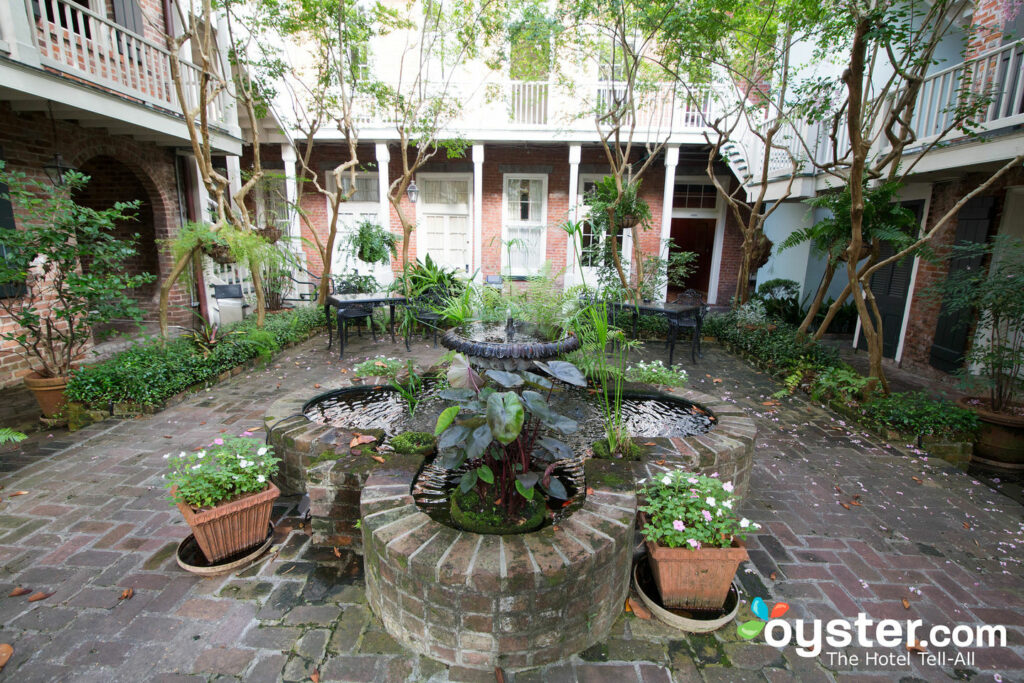
Place d’Armes Hotel, like many French Quarter properties, serves a free breakfast in its classic NOLA courtyard.
New Orleans has long been know as one of those lovely below-the-Mason-Dixon-line towns that embraces Southern hospitality with gusto — and this has been the case before, during, and after Hurricane Katrina.
“If our southern hospitality wasn’t already a standard, the hurricane brought more people together than ever before,” Alongi explains. “Sharing meals with families on completely different ends of the spectrum, borrowing out some valuable gasoline so our neighbors could use their generators for light, and helping neighbors pick up debris from their yards…those things united us like never before.”
New Orleans was ranked the third friendliest city in America this year by Travelzoo. It came in just behind Honolulu and New York. (Yes, as a company with New York headquarters, the latter surprised us too.) New Orleans’ quaint, historic bed-and-breakfasts — many of which are run by local couples and families — are perhaps in large part to thank for this positive ranking.
Check out the best boutique hotels in New Orleans >>
4. The storm created new attractions.
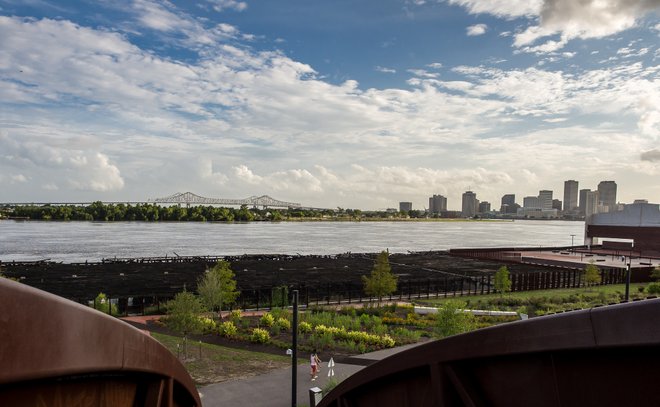
Crescent Park; Photo Credit: Don Pirolo
One silver lining to the storm is that it led to the creation of numerous attractions. Alongi says, “People want to see all the old and new, but mainly they want to experience something that no other city in the country has encountered.” Post-Katrina additions include the Lower Ninth Ward Living Museum and the riverfront Crescent Park.
5. New Orleans is the second most popular destination for bachelor parties.

After Vegas, New Orleans is the second most popular locale for bachelor parties. Legal drinking in the streets, bars that are open all night, infamously strong hurricane cocktails, and top-notch sports teams like the Saints — what’s not to love?
Take a look at the best bachelor party getaways that aren’t Vegas >>
6. It is home to the 2015 James Beard award winner for best chef in the South.

The New Orleans food scene is thriving. Famed longtime staples such as Commander’s Palace, which serves NOLA classics (like turtle soup) atop white tableclothes, remain, and a slew of top-rated newbies — including Cochon, Purloo, and Sylvain — have joined the culinary ranks since Katrina. This year, Alon Shaya of Domenica was named the James Beard Best Chef in the South.
You Might Also Like: The Signature Dishes at These Hotel Restaurants Will Have You Drooling
7. Crime is still high.
New Orleans’ high crime rate has never been a secret; in 2014, it ranked ninth on the list of America’s Murder Capitals. Though murder rates have declined each year since 2012, 2015’s first quarter saw a significant uptick — a whopping 73 percent — compared to the previous year’s.
8. And you can still booze in the streets.
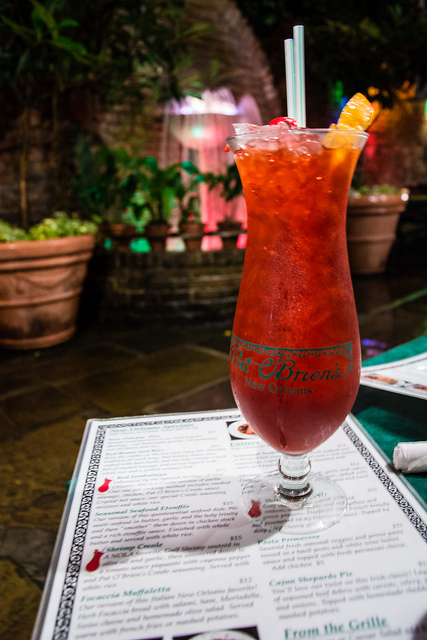
Pat O’Brien’s Hurricane Cocktail; Photo Credit: MsSaraKelly
On a lighter note, New Orleans is also notorious for its outdoor booze-fests. As long as your drink is not in a breakable container, you’re good to go.
If you’re celebrating something, you can even star in your own Second Line parade behind a brass band if you pay the necessary permit fees and police escort fees.
Are these America’s most booze-friendly cities?
9. Mardi Gras attendance has more than doubled since the first year after Katrina.
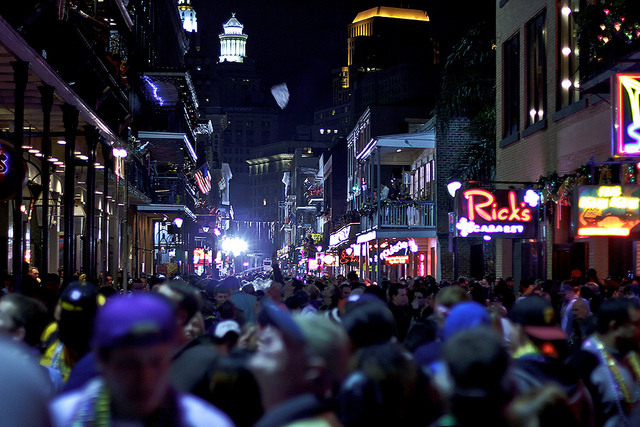
Bourbon Street; Photo Credit: praline3001
In 2005, the first Madri Gras after the storm only drew 700,000 attendees. That’s still a sizable crowd, and it was a true showing of New Orleans pride and strength, but about 1.4 million showed up for this year’s festivities.
10. Some residents are still suffering, and there are ways you can help.
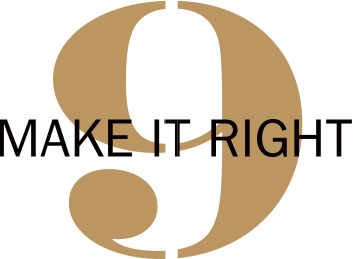
The number of homeless in New Orleans decreases year after year, but many who were displaced by Hurricane Katrina continue to struggle; some still live in their homes, which suffered catastrophic damage during the storm, without running water or electricity. There are numerous organizations that continue to aid Hurricane Katrina victims:
Want other ways to help while traveling? Here are hotel stays you can feel really good about >>
All products are independently selected by our writers and editors. If you buy something through our links, Oyster may earn an affiliate commission.



